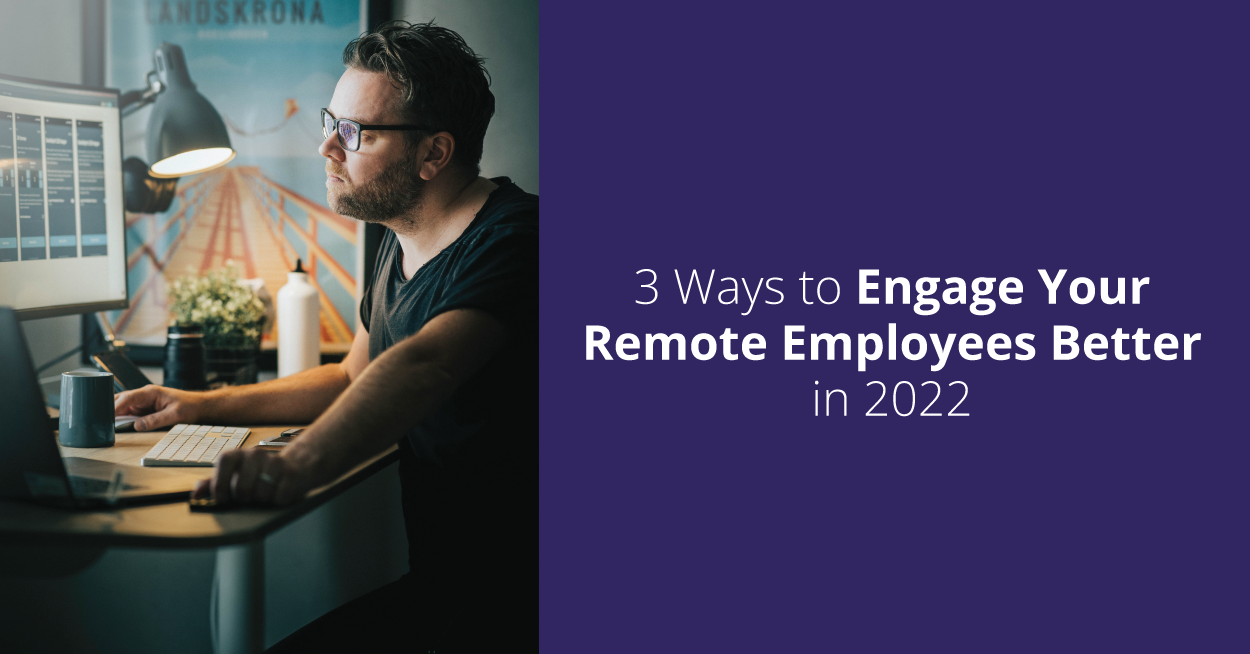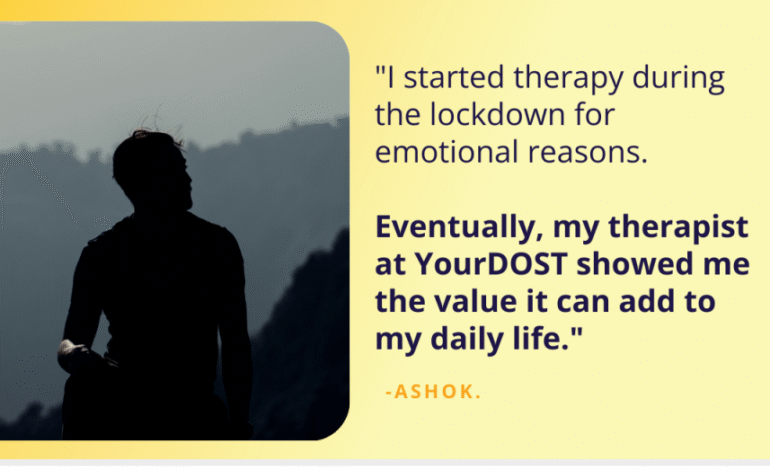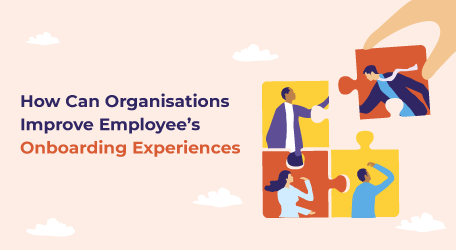
3 Ways To Engage Your Remote Employees Better in 2022

In a recent HR survey conducted by us, 46% of Indian HR executives claim that remote working has reduced employee engagement significantly in their respective organisations.
According to a report “State of Remote Work 2021”, more than half (56%) of Companies globally are ‘Hybrid Companies’ or Fully Remote Companies.
Recently in a casual chat-up, one of the HR executives at an organisation threw some light on the big elephant hidden behind the concern and said, “We really can’t make people do something. The zeal comes from within.”
They aren’t wrong.
Proximity made it easier for folks to catch up. With everything now being a calendar invite, informal catch-ups get ruled out considering the importance/priority.
The iconic tea-break conversations have stopped. Nobody is running into a peer from another department on their way to the cafeteria. The ‘good mornings’ are now mere formal texts, and ‘Fun-Fridays’ are losing their charm. a
So how do we drive greater engagement in a way that inspires a motivational culture and empowers employees with the missing zeal – remotely?
Here are a few hands-on tips that leaders and managers can consider:
1. Don’t tell, but show how it’s done!
Let’s face it – zoom fatigue is real and so is the communication gap due to lack of proximity. The only thing viable in a situation like this is finding a mid-way. Encouraging some nano-swaps in your usual approach might help improve day-to-day situations:
- Don’t frown or call out people who are never up on video. Instead, make sure you keep your camera on, every time you greet & communicate.
- Don’t ask your employees if they have feedback, instead opt for a built-in feedback tool or an internal process to empower it.
- Don’t just send cold emails on ‘emotional wellness’, make sure you care for them genuinely. An agenda-less one-on-one on a weekly basis is a great way of encouraging folks to open up and showing that you care.
- And if nothing seems to motivate them still, give them the necessary space and adequate self-help resources.

2. Bring back ‘small talks’ and ‘cafeteria’ conversations:
‘Small talks’ are underrated.
Even today, many organisations refrain from initiating conversations that are not ‘absolutely’ necessary. However, in a remote set-up with no cafeteria gatherings, one has to take the extra effort to communicate beyond the work table and keep conversations going!
Here are three practical tips that can help you get through it:
- Set up communication channels for casual talks
- Send an appreciation email after a tight deadline.
- Reconnect with people across teams
3. Do not anticipate ‘complete synchronisation’
Complete synchronisation across teams, individuals, groups is a myth. Flexibility is the key to engagement for people with different workloads, personal commitments, and comfort levels. Come up with innovative activities where people don’t need to join a video call live!
Here are a few examples:
- A quiz about the company or colleagues. You should not bother if people are cheating. At the end of the day they are learning about colleagues or companies indirectly.
- A discussion thread on slack/ mail to appreciate the previous sender. Whoever is the last sender wins.
The pandemic has thrown different challenges for different people working from home. While companies have introduced gamification and recreational activities, there is no ‘one size fits all’ engagement policy except assumptions on participation.
So how do you create engagement that interests all? YOU DON’T.
Instead, you focus on the golden rules of engagement –
- Ditch the expectation of 100% participation. Understand that a working mother might choose to spend time with their kid over an activity that’s not a must-attend. Give your employees the space when needed.
- Create mini-cultures and individual levels of engagement between managers and employees to acknowledge, and appreciate differential engagement levels. Remember, not everybody yields the same level of engagement.
As a leader in a world shifting gears every day, you must empower employees to draw boundaries, seek help and communicate better. And while you’re on it, remember, the zeal to make things work might be internal, but the inspiration could be anything – preferably your company and its culture.








